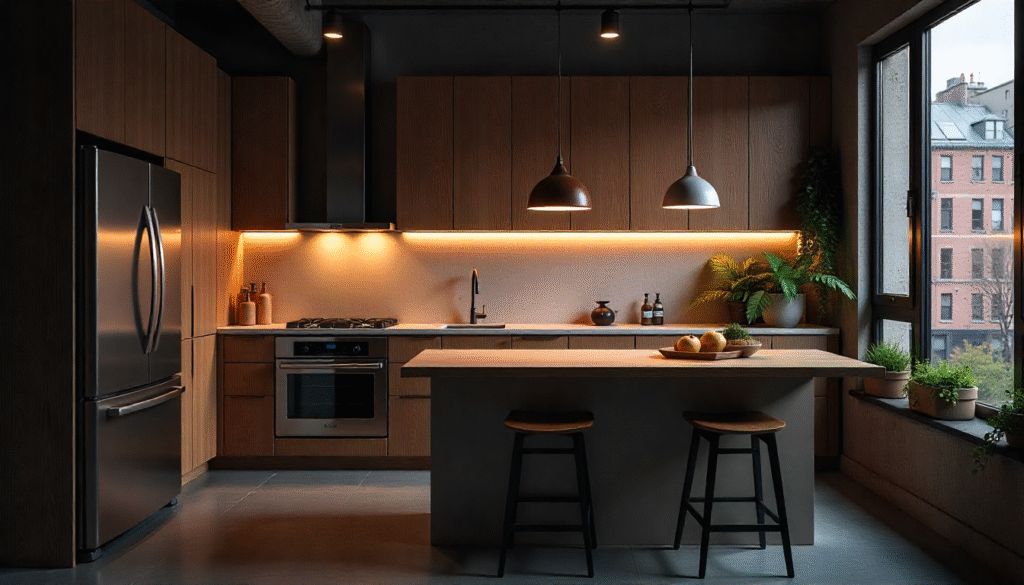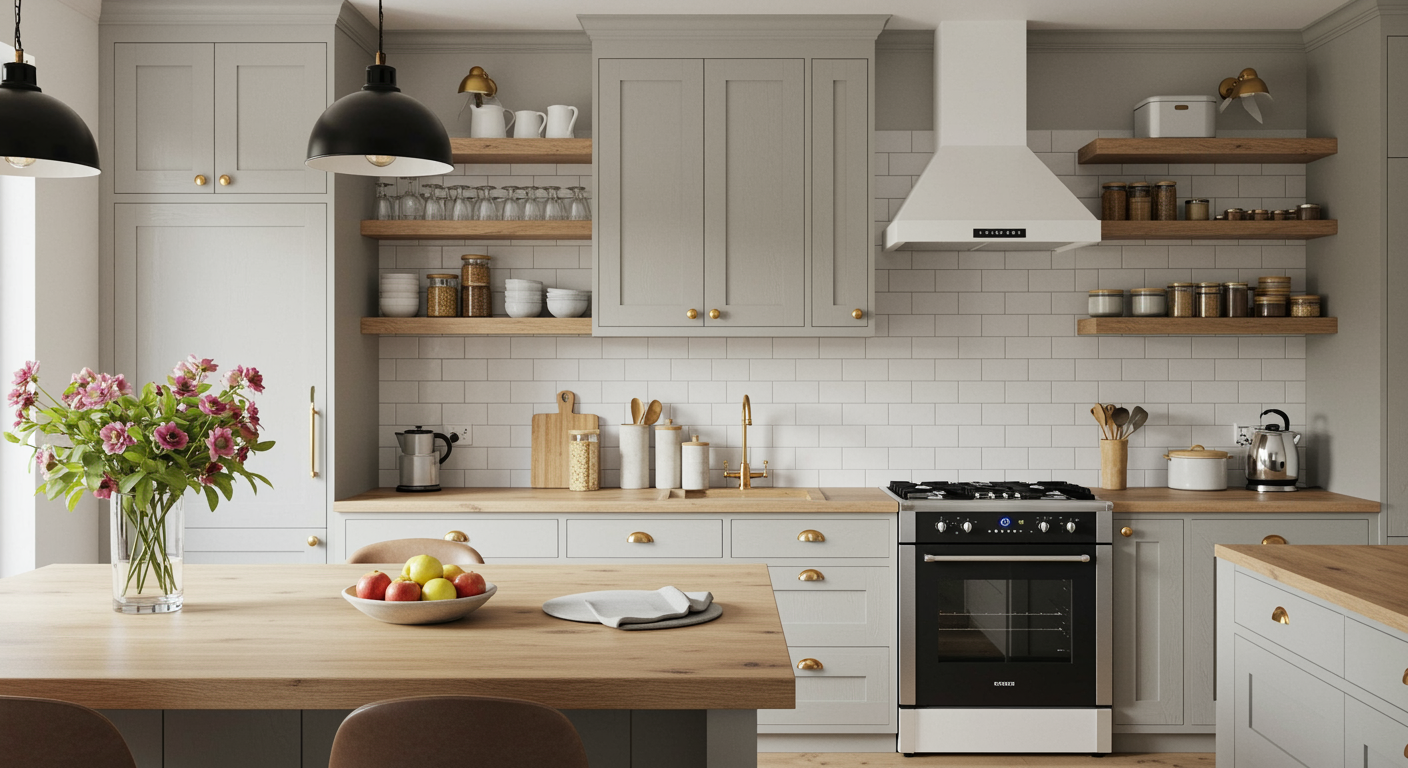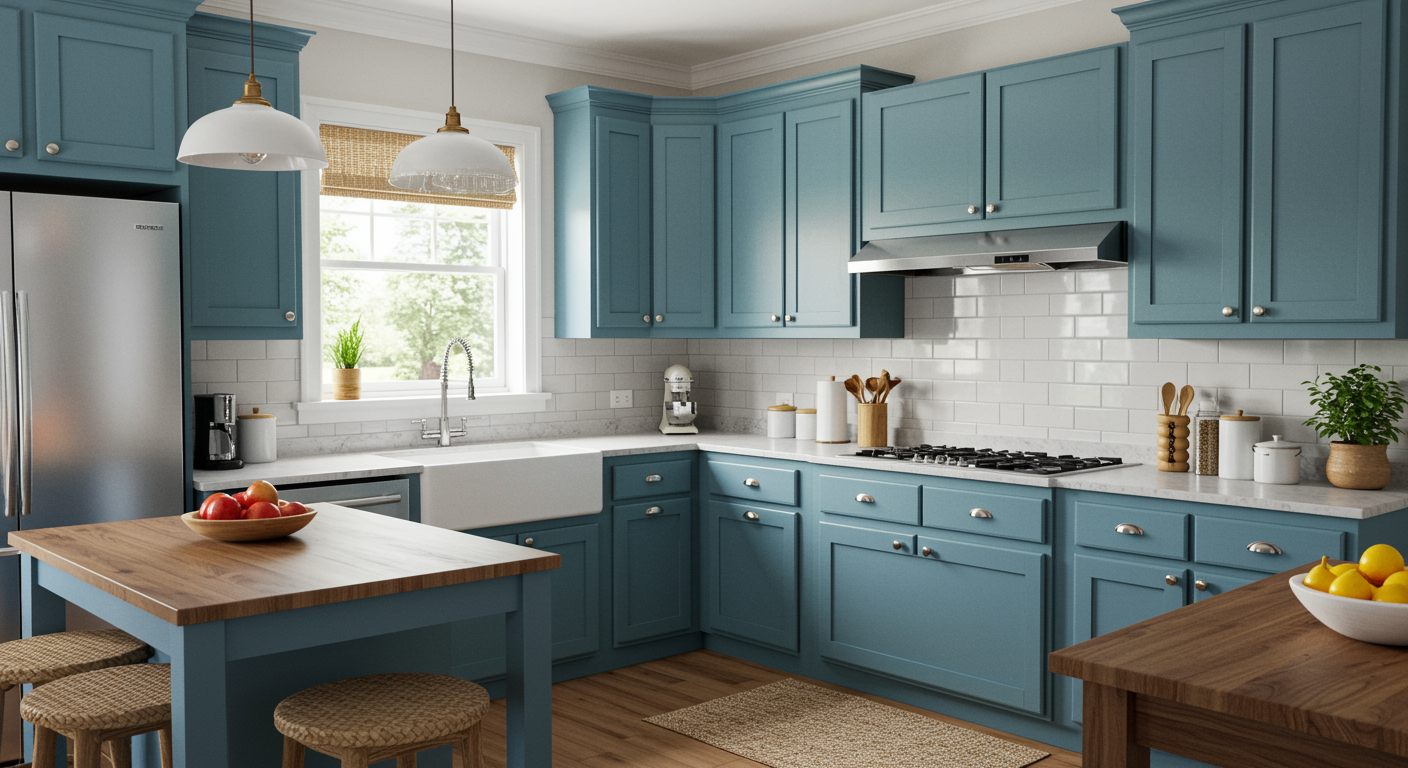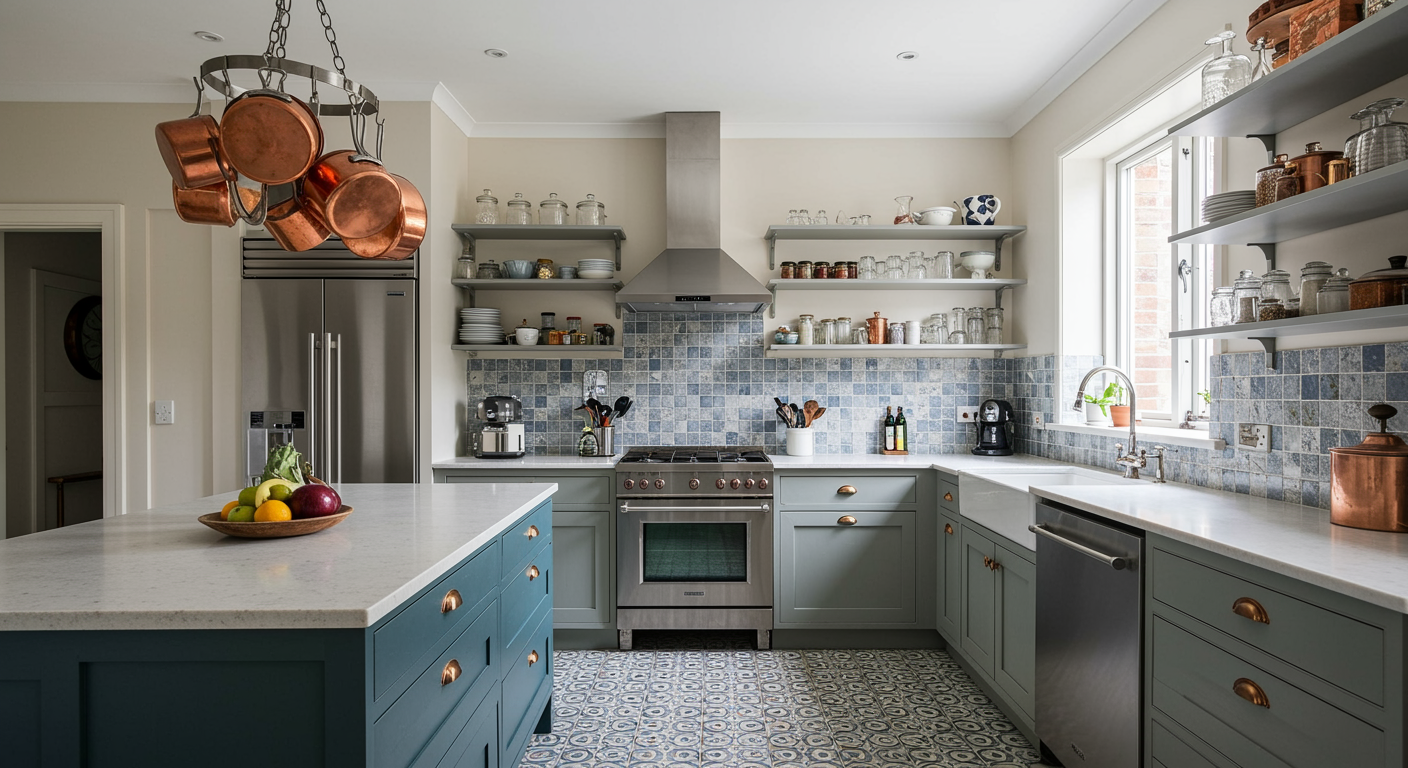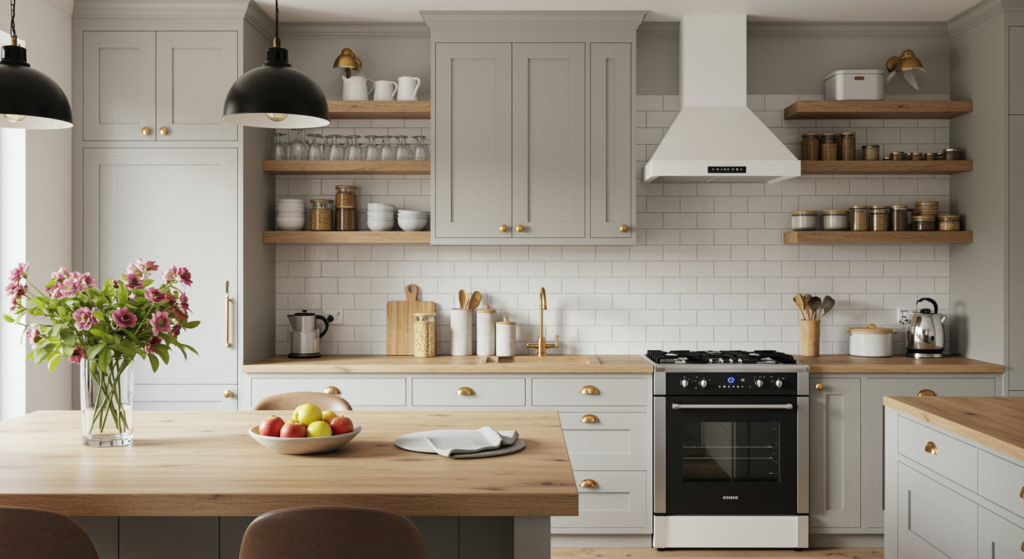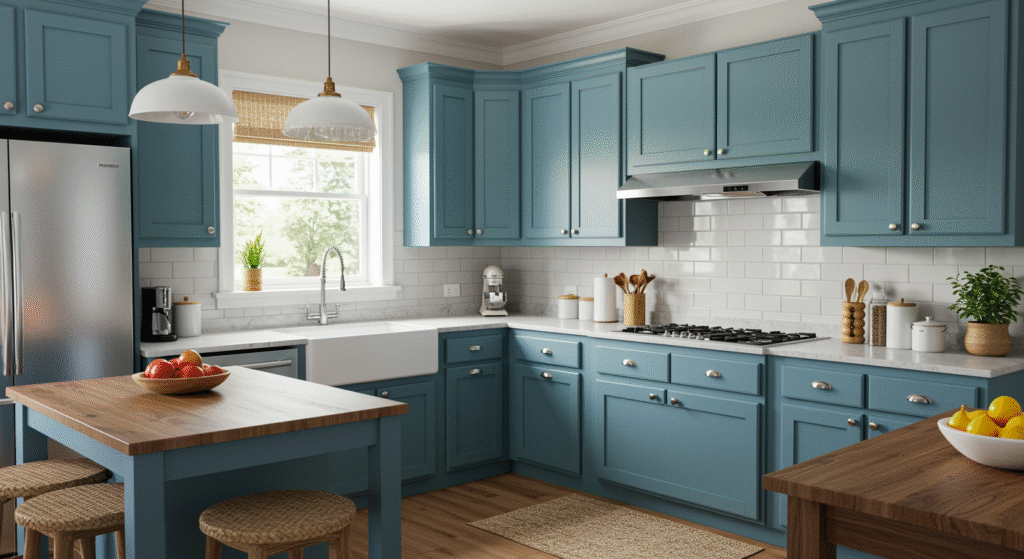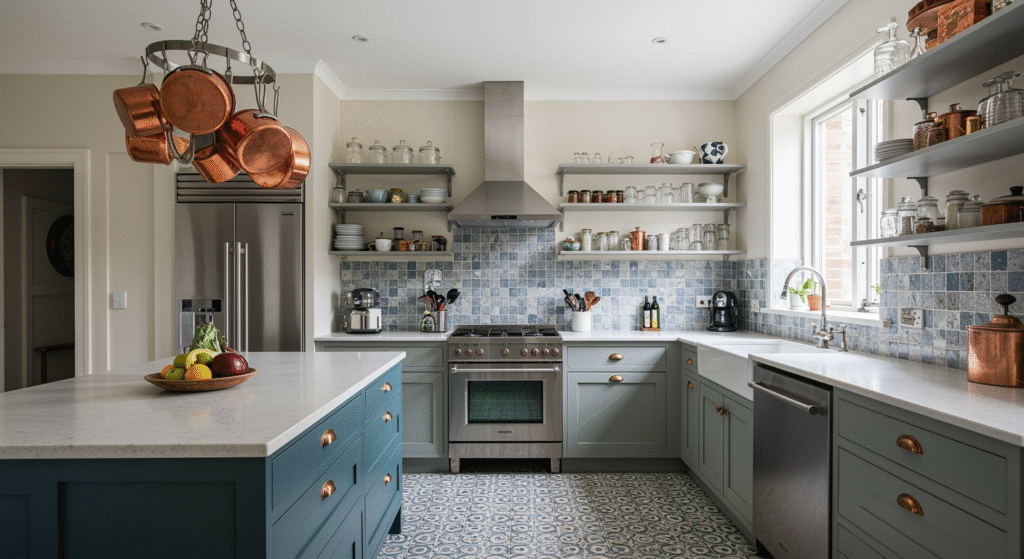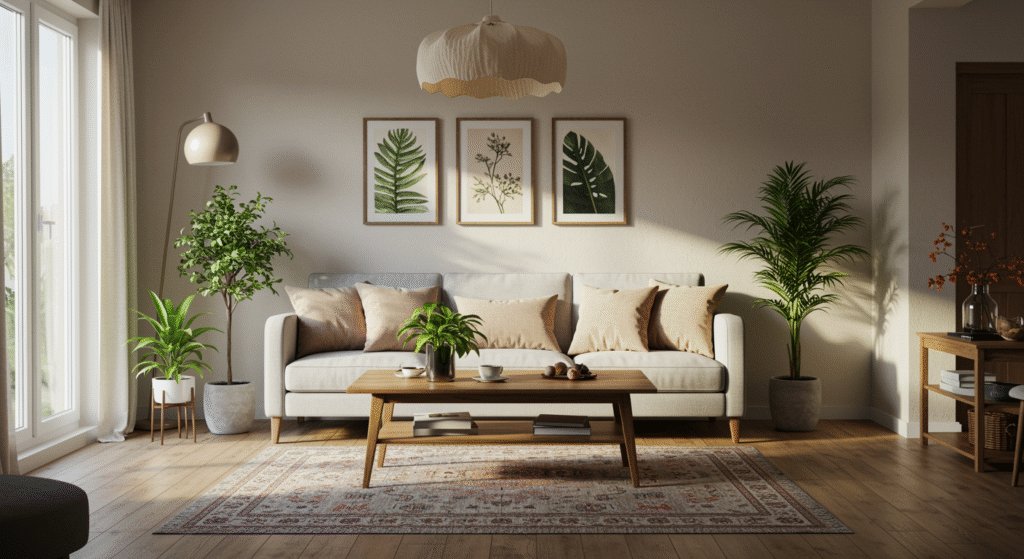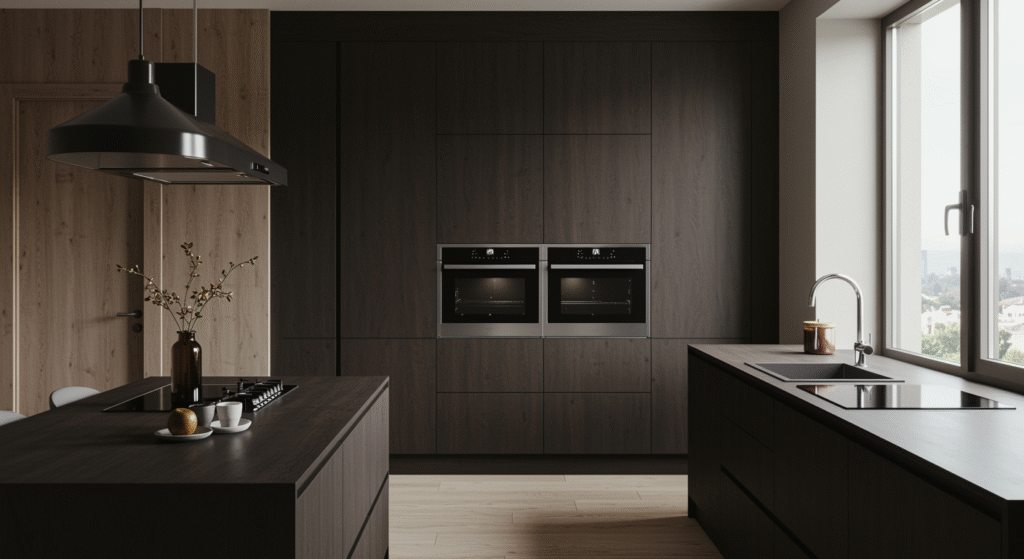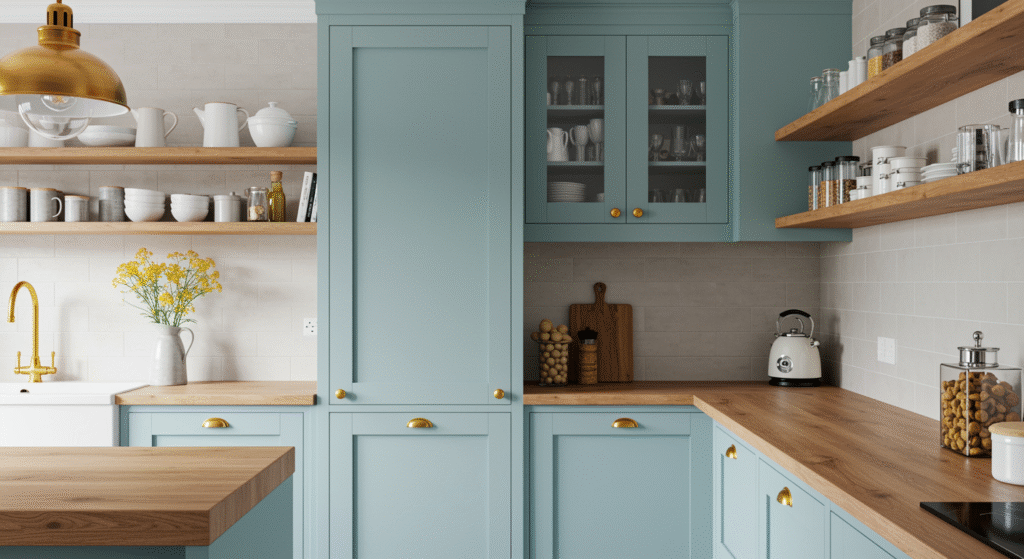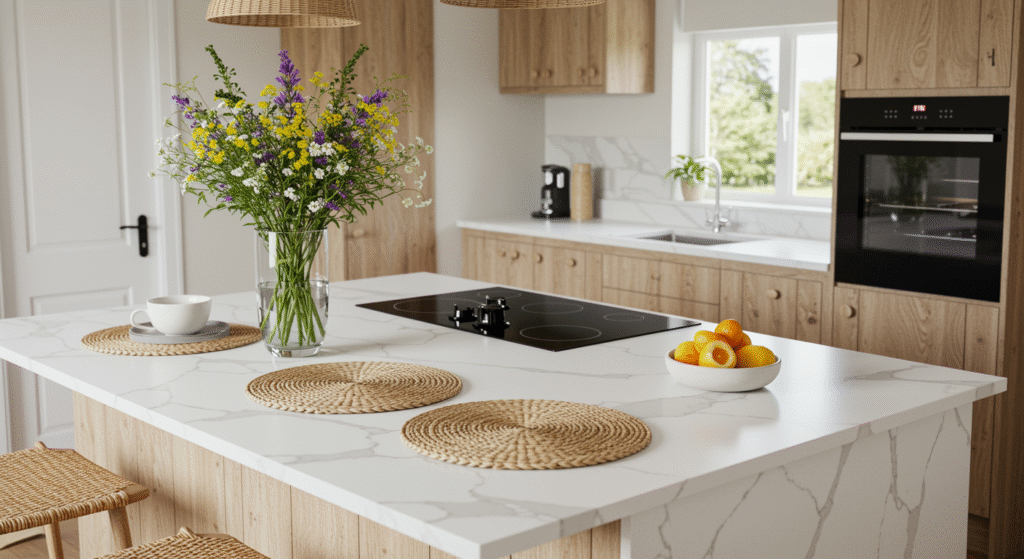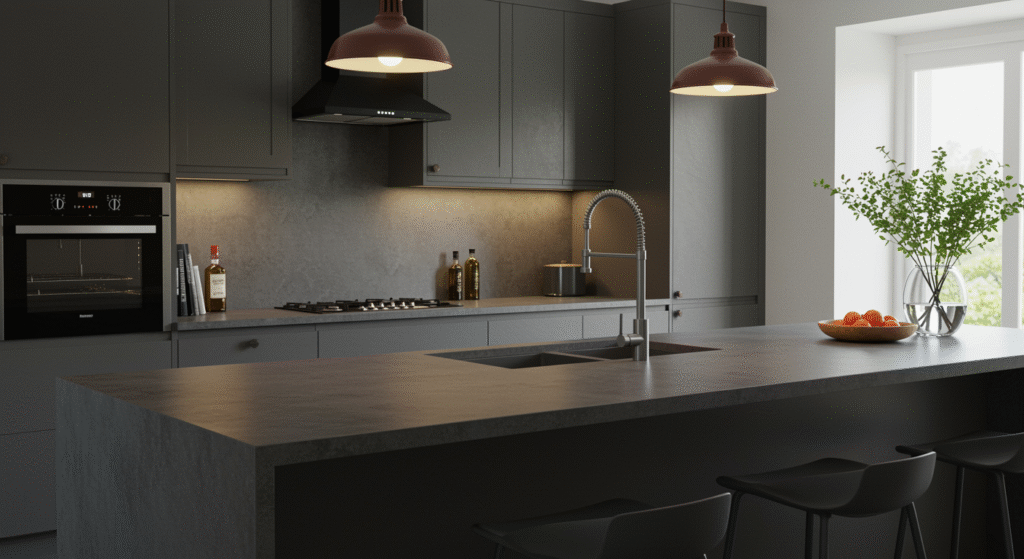Protect your kitchen by giving your furniture the proper maintenance it merits to preserve beauty as well as utility. Regular cleaning, protective finishes, and avoidance of too much humidity can help your chairs, tables, and cabinets last longer. Regular maintenance will help you maintain a crisp, polished appearance that invites long-lasting allure in your kitchen.
Protect Your Kitchen 1: Guard Against Heat and Moisture
Protecting your kitchen furniture is crucial as heat and moisture are the main culprits behind long-term damage; hence, this is among the most important considerations. Every day cooking exposes your kitchen to steam, spills, and sudden temperature changes — all of which could distort wood, discolour finishes, or weaken adhesives.
To stop this, always use heat resistant pads, trivets, or coasters when setting hot pots, pans, or even freshly baked meals on kitchen counters and dining tables. Direct heat exposure can fracture natural stone or laminate surfaces in addition to leaving burn marks. Equally dangerous is moisture; if spills go unchecked, water rings, stains, and swelling can readily happen.
To prevent liquids — be it water, oil, or sauce from penetrating permeable surfaces, get in the habit of cleaning them immediately. Add sealants to wood cabinetry or reseal stone countertops often in places prone to high humidity, such near sinks or dishwashers, to preserve their resistance. Good ventilation is equally crucial; using a range hood when cooking helps to reduce condensation accumulation that can eventually settle on furniture and cabinets.
Furthermore stay clear of moist dishcloths or sponges on laminate or wooden counters as extended exposure can result in peeled surfaces or mould development. You can effectively protect your kitchen furniture against the daily wear of heat and humidity by using these little but constant actions such as sealing surfaces, installing protective barriers, and guaranteeing enough airflow hence preserving its beauty and utility for decades.
Protect Your Kitchen 2: Prevent Scratches and Dents

One of the most successful strategies to keep your kitchen furniture and surfaces appearing new for years to come is preventing scratches and dents. High traffic kitchens are sites where daily use, weighty pans, and unintended collisions might easily cause damage if proper care isn’t taken.
One of the easiest preventative actions is to reduce friction on the flooring and cabinetry by using rubber stoppers or felt pads beneath chairs, stools, and movable furniture. Likewise, while working on countertops, always use cutting boards instead of chopping directly on the surface as even the most tough materials like quartz or granite can get scratches over time.
@ampquartzcabinets Takyah risau island kecik kalau boleh tarik jadi panjang and gerak gerak lagi 😍 #AmpQuartz #IslandCabinet #kitchencabinet #solidplywood #fyp
♬ original sound – AmpQuartz – AmpQuartz
Lifting and carefully setting heavy items like dishes, pans, or large appliances onto tables or counters is a much safer behaviour than dragging them. For wooden cabinets and dining furniture, tablecloths, placemats, and coasters offer a defensive shield against daily use or utensil damage. Think about lining cupboards and drawers to cushion cookware and stop sharp objects from leaving marks. Installing corner guards or instructing your children on careful usage of doors and drawers will help to minimise unintentional dings as well.
Early detection of minor chips or scratches via regular inspection enables for simpler repair before they deteriorate. Adopting these easy habits and adding protective techniques into your cooking schedule can greatly lengthen your furniture’s appearance and life span.Stopping dents and scratches saves value and beauty while also lowers the demand for expensive repairs or replacements later on.
Protect Your Kitchen 3: Protect Against Sun Damage
Protect against sun damage — one of the most neglected yet important components of kitchen furniture maintenance is damage. Over time, extended exposure to direct sunshine can slowly diminish the rich colours of wood cabinets, discolour laminates, and perhaps compromise the structural integrity of some materials.
Your kitchen furniture, much like our skin, needs UV ray protection. First you must determine which surfaces are most impacted and how much natural light penetrates your kitchen during the day. Setting blinds, curtains, or UV-protective window films can considerably lower the intensity of sunshine without compromising brightness. Sheer curtains or adjustable blinds are excellent choices for homes that value natural light since they filter rays without sacrificing an airy sensation.
Another practical habit is rotating furniture and decorations now and then to stop erratic fading in places subject frequently exposed. Applying protective polishes or sealants meant to block UV radiation can further protect wooden and stone finishes. For cabinets or counters in sun-heavy kitchens, also think about using lighter tones as these often show less fading than darker ones. Choosing UV-resistant fabrics or slipcovers might help extend the life of any upholstered seating or fabric cushions in your kitchen.
Regularly turning or flipping cushions also guarantees even wear. Fundamentally, safeguarding your kitchen from sunlight damage is about striking a balance between long-run preservation and natural light. Simple preventative steps will help you to preserve your cabinetry, countertops, and furniture looking crisp and vivid for years while yet savouring the warmth and openness sunlight brings into your house.
Protect Your Kitchen 4: Seasonal Checkups
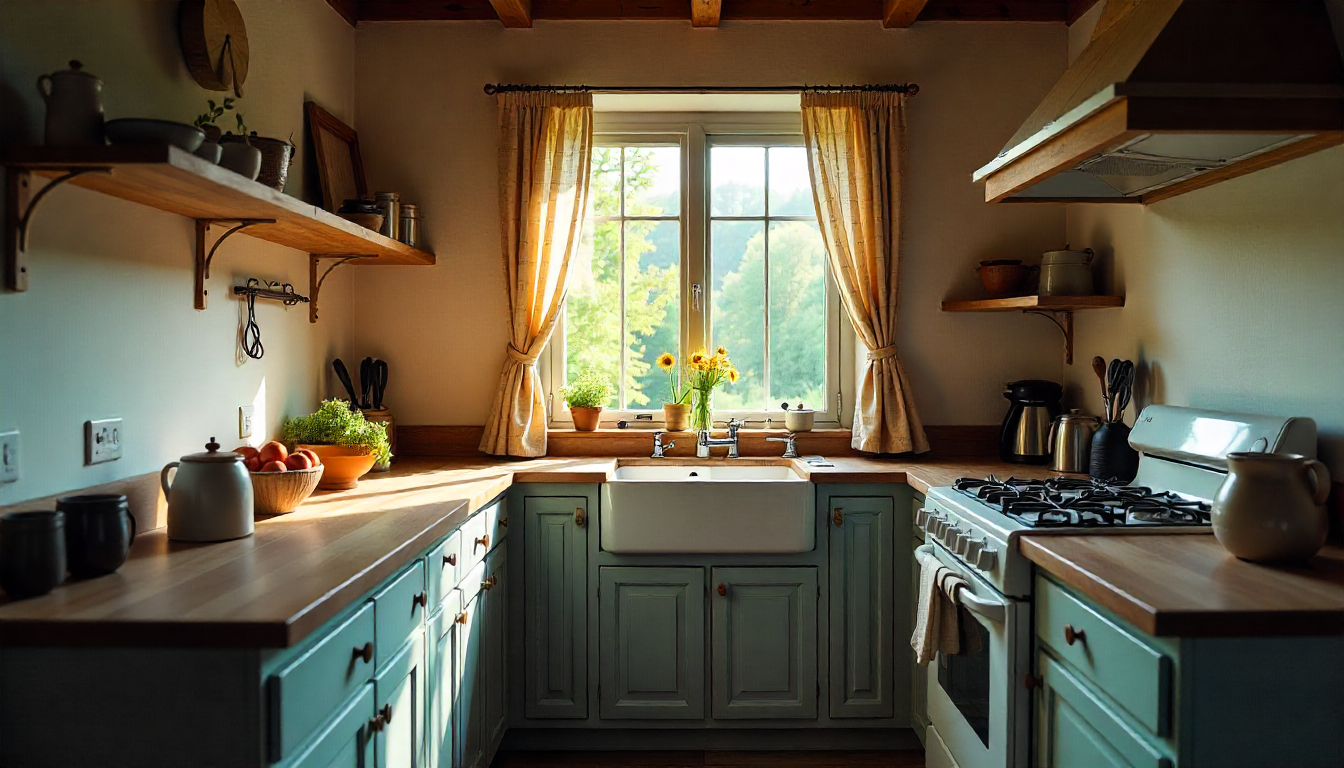
One of the most efficient but often ignored methods to preserve your kitchen furnishings and lengthen their life is seasonal checkups. Regular inspections of your kitchen, like those of your body, help to maintain it in great condition by catching little issues before they get pricey repairs.
Early in each season, scour your cabinets, counter tops, dining furniture, and flooring for first indications of wear and tear. Examine the handles and hinges on your cabinets to make sure they are not coming loose or exhibiting corrosion; tighten or change the hardware as necessary. Look for misalignment in doors and drawers as that can point to underlying structural stress.
@ampquartzcabinets Yeayyyy! It’s finally completed! 🥳🥳 #AmpQuartz #CabinetMaker #JohorBahru #FullHouseCabinet #fyp
♬ original sound – AmpQuartz – AmpQuartz
Countertops should be examined for chips, cracks, or water damage, especially near sinks where moisture exposure is highest. This is the ideal time to reseal wooden or stone surfaces to preserve their strength.Stools, chairs, and dining tables should be examined for wobbly legs or scrapes that would become more severe if overlooked. Kitchen flooring also requires attention; search for loose tiles, water stains, or worn-out finishes as these could have an impact on both beauty and safety.
Four times a year, seasonal checkups enable you to detect hidden problems including mould, pest damage, or too much humidity that could compromise the integrity of your furniture. You not only maintain the look and usability of your kitchen by arranging these inspections but also save money by avoiding expensive replacements. Imagine yearly seasonal inspections as your kitchen’s wellness regimen — basic, proactive care that keeps everything functioning perfectly year after year.
Protect Your Kitchen 5: Use Protective Finishes
One of the most efficient methods to extend the life of your kitchen furniture and maintain its attractiveness over years is using protective finishes. Applying the right finish acts as a barrier against daily wear and tear whether your kitchen has stone counters, wooden cupboards, or eating furniture.
A premium polish, wax, or sealer for wooden surfaces helps stop fading from sunshine, moisture absorption, and scratches. Regularly resealing your wood also improves its natural grain and gives it a new look. To avoid stains from oils, sauces, or acidic components that can penetrate porous surfaces, stone countertops such as granite or marble should be resealed frequently.
Protective sprays or coatings can improve even laminate and stainless steel by lowering fingerprints and smudges and imparting a faint shine. These treatments beyond looks simplify cleaning since spills and trash are less likely to stick to treated surfaces. In high-traffic areas like the kitchen, where frequent cooking, cleaning, and movement endanger furnishings, protective coatings are also quite useful.
Homeowners can save expensive repairs or replacements and guarantee their kitchen stays a welcoming, functional, and fashionable room by spending only a little time applying and maintaining finishes. Consider finishes as a protective shield: they not just save the materials but also improve the general appearance of your kitchen, keeping it polished and resilient against the needs of everyday life.
Sign Up For Kitchen Design Ideas
Join over 5,000 homeowners subscribed to our newsletter!

